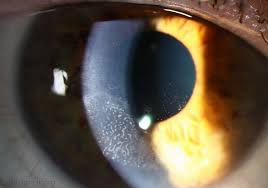Table of Contents
ToggleIf you’re a fitness enthusiast or a health-conscious individual considering LASIK surgery—or if you’ve recently undergone the procedure—you’re likely wondering how soon you can return to your jogging routine.
Regular physical activity is essential for maintaining overall health and well-being, and it’s natural to be eager to resume exercise as soon as possible.
However, when it comes to post-LASIK recovery, it’s important to proceed with caution to ensure optimal healing.
In this comprehensive guide, we’ll explore everything you need to know about jogging after LASIK. We’ll discuss the timeline for resuming physical activities, potential risks associated with running too soon, and precautions to take to ensure a safe return to your fitness routine.
Understanding LASIK Surgery
Before we discuss jogging specifically, let’s briefly review what LASIK surgery entails.
LASIK (Laser-Assisted In Situ Keratomileusis) is a popular refractive surgery that corrects vision problems like myopia (nearsightedness), hyperopia (farsightedness), and astigmatism. The procedure utilizes advanced laser technology to reshape the cornea, allowing light entering the eye to be accurately focused onto the retina, resulting in enhanced visual clarity.
LASIK surgery is generally a swift procedure, typically lasting between 10 to 15 minutes for each eye. The majority of patients observe substantial enhancements in their vision within a 24-hour period.
However, the complete healing process may take a few weeks to months, during which it’s crucial to follow your surgeon’s post-operative instructions diligently.
General Post-LASIK Recovery Timeline
Understanding the general recovery timeline after LASIK can help you plan when to resume jogging or other physical activities:
- First 24-48 Hours: During this period, rest is paramount. Your eyes may feel dry, gritty, or itchy, and you may experience some blurriness or fluctuations in vision. Avoid touching or rubbing your eyes, and use prescribed eye drops as instructed to prevent infection and promote healing.
- First Week: While many daily activities can be resumed, strenuous exercise should be avoided. Protect your eyes from dust, sweat, and potential injury by wearing protective eyewear. It’s recommended to steer clear of swimming pools, hot tubs, and saunas during this time.
- Two Weeks Post-Surgery: With your surgeon’s approval, you may start engaging in a light exercise like walking or yoga. Continue to avoid activities that could lead to eye strain or injury.
- One Month: By this time, most patients can gradually resume more vigorous activities, such as jogging, provided they continue to take necessary precautions. Always follow your surgeon’s advice tailored to your specific recovery progress.
- Three Months and Beyond: Full healing is expected, but regular follow-up visits with your eye doctor are essential to ensure your vision remains stable and healthy.
When Can I Start Jogging After LASIK?
The timeline for resuming jogging varies among individuals, as recovery can depend on personal health factors, the complexity of the procedure, and how well you adhere to post-operative care guidelines.
Generally, most individuals can safely resume jogging two to four weeks after LASIK, provided they’ve received clearance from their eye surgeon.
Here are some factors to consider before lacing up your running shoes:
- Healing Progress: Ensure your eyes have healed sufficiently and that any post-surgical symptoms (like dryness or light sensitivity) have subsided.
- Surgeon’s Advice: Follow the specific recommendations given by your surgeon, as they can provide guidance based on your unique case.
- Protective Eyewear: Invest in good-quality sunglasses or sports goggles to shield your eyes from UV rays, wind, and debris while jogging.
- Environment: Choose a clean, safe route free from excessive dust, pollen, or other irritants. Avoid running in extreme weather conditions, which could exacerbate eye discomfort.
- Monitor Your Body: Pay attention to how your eyes and body feel during your first few runs, and adjust your activity level accordingly. If you experience any discomfort or vision changes, consult your eye doctor promptly.
Risks of Jogging Too Soon
While the eagerness to return to jogging is understandable, it’s vital to recognize the risks associated with resuming exercise prematurely. Here’s why patience is key:
- Increased Eye Pressure: Physical exertion increases blood flow and pressure throughout the body, including the eyes. Engaging in intense exercise too soon could hinder the healing process or cause complications.
- Exposure to Irritants: Outdoor jogging may expose your eyes to dust, pollen, or sweat, leading to irritation or infection if proper protection isn’t worn.
- Risk of Injury: Accidental falls or collisions while jogging could impact the healing cornea, potentially requiring further medical attention.
- Delayed Healing: Rushing back into exercise can interfere with the body’s natural healing processes, prolonging recovery time and impacting long-term visual outcomes.
Tips for a Safe Return to Jogging
When your surgeon gives you the go-ahead to start jogging again, follow these tips to ensure a safe and enjoyable experience:
- Start Slowly: Gradually ease back into your routine by reducing the intensity and duration of your runs initially. Pay attention to your body’s signals and allow yourself the necessary time to progress at a comfortable pace.
- Stay Hydrated: Proper hydration supports overall health and helps maintain tear production, alleviating any dryness associated with the healing process.
- Warm-Up and Cool Down: Effective warm-ups and cool-downs minimize injury risk and promote circulation, which is beneficial for your eyes and overall fitness.
- Wear a Hat: In addition to sunglasses or goggles, wearing a hat with a brim can provide extra protection from sun glare and sweat.
- Avoid High-Impact Environments: Initially, select flat, predictable surfaces for your runs to reduce the risk of tripping or jarring movements.
- Maintain Good Nutrition: A balanced diet rich in vitamins and antioxidants supports eye health and overall recovery.
Engaging with the Community
Finding motivation and camaraderie in a supportive community can enhance your jogging experience post-LASIK. Connect with other LASIK patients or fitness enthusiasts through online forums, social media groups, or local running clubs.
Sharing experiences, challenges, and milestones helps create a sense of belonging and encourages a proactive approach to fitness and eye health. Plus, you might discover new jogging routes, valuable recovery tips, and like-minded individuals who share your passion for running.
Moving Forward
Jogging after LASIK is not only possible, but it can also be a rewarding and fulfilling part of your fitness routine once you’ve received medical clearance. Prioritize your recovery by following your surgeon’s recommendations, utilizing protective eyewear, and gradually reintroducing physical activity.
Remember, your vision is a precious gift, and taking the necessary time to heal and adjust post-surgery ensures you’ll enjoy clear, vibrant views for years to come. For tailored advice and guidance specific to your individual circumstances, please consult your eye care professional.
We hope this guide has provided valuable insights into the considerations, risks, and benefits of jogging after LASIK. Lace up those running shoes—and enjoy the renewed clarity and appreciation for the world around you!













